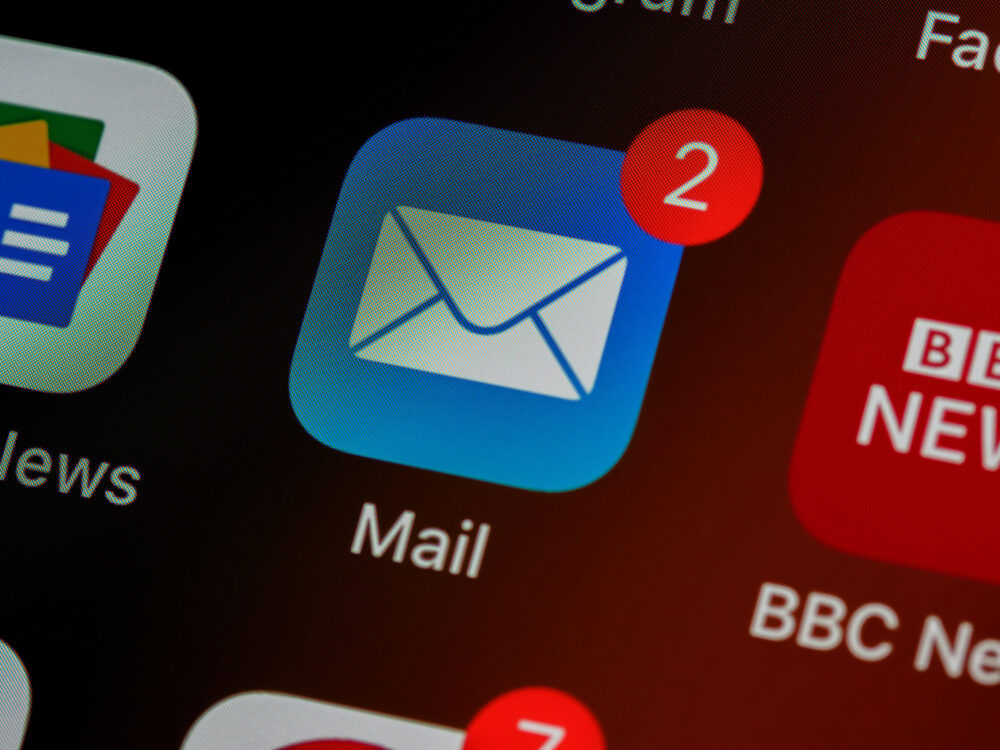The Temptation of Email
A Tool or a Weapon?
Email is a fabulous tool.
And, it is the biggest destroyer of productivity, creator of mis- understandings, irritant, distractor, time-waster and builder of extra work currently available to us in the workplace.
Many of us are buried in email, and yet, we find it difficult to resist the temptation to open, read, and respond immediately.
What follows are some suggestions I hope may help – “how” and “when” to use email, and other ideas to cut back the flow.
A CONSTANT TEMPTATION
Email is like a little gift waiting to be opened – will it be a good one, or a bad one?
It represents a fire to be put out, a need to be filled, an obligation to meet.
When you open and respond, you get the immediate thrill of productive activity — without, in many cases, that productivity being in any way real, important, or mission critical.
A lot of email is like conversation at a big, loud party. It might be enjoyable, it might be boring, and many times the excess noise covers up items of real interest.
Email is like someone tapping you on the shoulder all the time.
Controlling it takes discipline
Just like any other temptation – shopping, gambling, drinking, eating – or parties! – we have to decide to be disciplined in how we resist it, use it to our benefit, or be controlled by it.
HOW AND WHEN
There are two particular issues to be addressed:
✓ WHEN to use email so as to minimize e-missile misunderstandings, bad paper trails, and excess confusion.
✓ HOW to lift – by a small amount – the sheer weight of the zillions of emails coming every day.
NOTE: I recognize that some of these may be unrealistic, given company expectations and different cultures. And, if you can use one or two – or even more of them, it will change things for you.
WHEN TO USE EMAIL
Email is communication without body language or tone of voice. People will always tend to read in the most negative intentions into your email.
✓ Anything positive will likely be read as neutral.
✓ Anything negative will be read as horrific.
✓ Things that are essentially neutral will be read as negative.
✓ Therefore, care must be taken in style, and in when you use email, and what you use email for.
Adding extra positive language, punctuation, and even (as appropriate) emoticons to positive and neutral things will increase the likelihood that they will be “heard” as you intend. Avoid negative emails altogether – except as follow-up – as a best practice, as they will virtually always be misconstrued.
Use email:
✓ To give positive feedback or thanks
✓ To detail or outline information
✓ To confirm details of decisions, agreements or discussions, or receipt
✓ To set appointments, give directions, etc.
✓ To indicate a need to talk to clarify or to express concerns
DO NOT use email:
✓ To criticize, complain, or give negative messages of any kind. This includes sarcastic or emotion-driven remarks.
✓ To send jokes, chain letters, etc. etc. without asking for permission via phone first
✓ To contact someone in the office next door, unless it is to confirm details, discussions, etc. as a written record
✓ To chat with someone in a meeting with you – this is incredibly disrespectful, like a teenager passing notes in class. It’s also trackable and could come back to haunt you
If you have a question about the language, or the format, get in the habit of saving things in a “draft” folder to look at later.
HOW TO USE EMAIL
Rules of engagement:
✓ FACE TO FACE IS PRETTY MUCH ALWAYS BETTER.
✓ Don’t email if you can phone; don’t phone if you can show up in person.
✓ Get up and walk down the hall – if nothing else, the exercise will do you good!
✓ Follow up via email AFTER the fact, stating what you agreed to, and requesting confirmation, questions, or correction.
✓ Consider the cc list. Those folks are buried, too!
Schedule and limit email review periods.
✓ Block your calendar to buy time
✓ Look at email in blocks of time, a few times a day, vs. on a constant basis
✓ Help the people around you to modify their expectations of your response time
✓ Set – AND KEEP rules on your weekends and evenings (note: this doesn’t have to be NO access – it could be once only, or only in emergencies, or request a phone call first)
✓ Consider working with your department or area to get everyone doing the same thing!
Advise the people around you – your boss first – about what you are doing
✓ Tell them you would like to develop a more productive focus, and are going to look at emails at 8 am, 1 pm and 4 pm, or at 10 am and 2 pm (or whatever makes sense to you).
✓ Avoid the temptation to look at email on the weekend, the evenings, on vacation etc. and/or set up “rules” around it, and stick to them. Make a decision about how often is appropriate (if at all) and stick to it.
✓ Be freer with your phone number. If it’s a crisis, people will call.
✓ Block these times on your calendar, so those people scheduling through Outlook, for example, will look for another time.
✓ Be reasonable in the amount of time you are blocking –start with a bigger amount, then adjust downward when your email slows.
Tell people that if a crisis comes up outside your email response times, again, they should give you a call, as, of course, you will respond immediately.
✓ If they need to give more info, suggest they call – or drop by – and tell you they are sending you email information about a crisis.
✓ Put your telephone number(s) at the bottom of every email, so it will be easy to find.
Ask people not to send you any of the jokes, games, chain messages, pictures of their vacation or other time wasters.
They may be interesting and/or funny….and you don’t want to reward yourself for checking email, at least in the beginning!
✓ If they send things anyhow, call and ask them not to. (Call them on their behavior!)
✓ Alternatively, ask people to call you and let you know they are sending you something funny – this will cut down on the traffic.
Color code names
Some email programs allow you to color-code your incoming email. Redline important or critical names so you can scan quickly
Delegate to someone else
If you have an EA, a secretary, or a trusted subordinate, consider letting them review your email – especially if you’ve color-coded it.
Give them guidelines about things they can respond to, and/or delete (such as jokes).
Leave your smartphone in your office whenever you can, or only answer it as a phone.
Review email on it only at pre-decided times! Just because it’s not your computer doesn’t mean it isn’t email!
Consider bringing together your department to decide on rules of engagement.
Don’t force them – work to come to an agreed schedule, format and set of behaviors.
If, for example, all agree to look at email at roughly the same time, then fewer meetings and other activities will be impacted.
Erat imperdiet sed euismod nisi porta lorem mollis. Pretium lectus quam id leo in vitae. Cras sollicitudin, tellus vitae condimentum egestas, libero dolor auctor tellus, eu consectetur neque elit quis nunc. Cras elementum pretium est. Nullam ac justo efficitur, tristique ligula a, pellentesque ipsum. Quisque augue ipsum, vehicula et tellus nec, maximus viverra metus. Nullam elementum nibh nec pellentesque finibus. Suspendisse laoreet velit at eros eleifend, a pellentesque urna ornare. In sed viverra dui. Duis ultricies mi sed lorem blandit, non sodales sapien fermentum. Donec ultricies, turpis a sagittis suscipit, ex odio volutpat sem, vel molestie ligula enim varius est.Donec ultricies, turpis a sagittis suscipit.
“Lorem ipsum dolor sit amet, consectetur adipiscing elit sed eiusmod tempor incididunt ut labore et dolore magna aliqua.”
Nisl rhoncus mattis rhoncus urna. Mattis pellentesque id nibh tortor id aliquet lectus proin. Nisi porta lorem mollis aliquam ut porttitor leo a diam. Maecenas volutpat blandit aliquam etiam erat velit scelerisque in. Amet facilisis magna etiam tempor orci eu lobortis elementum. Duis at tellus at urna condimentum mattis pellentesque id nibh. Sit amet commodo nulla facilisi nullam vehicula ipsum. Mauris cursus mattis molestie a iaculis. Etiam sit amet nisl purus in. Vitae tempus quam pellentesque nec nam aliquam sem et tortor. Natoque penatibus et magnis dis parturient montes nascetur ridiculus. Egestas purus viverra accumsan in nisl nisi scelerisque donec ac odio tempor orci dapibus ultrices.






